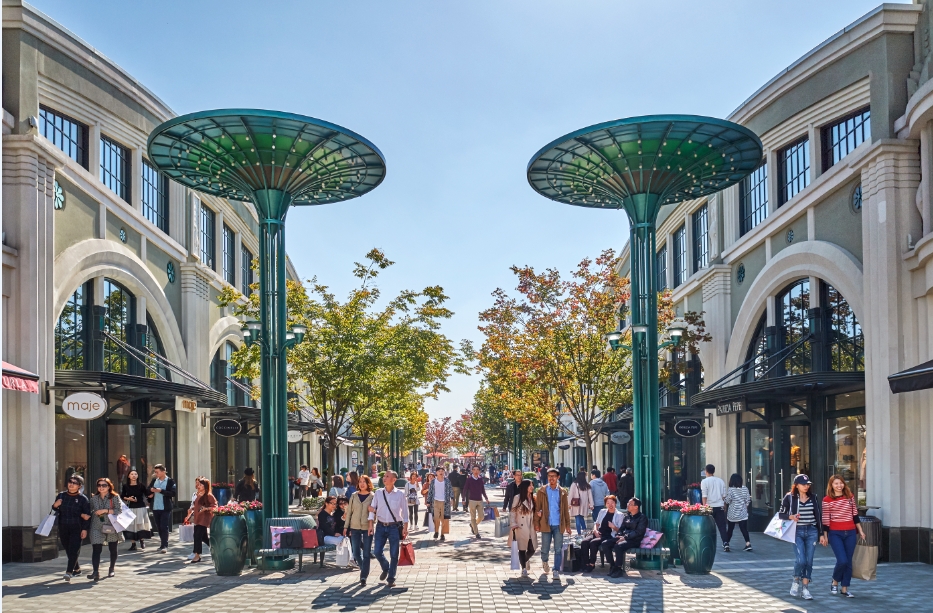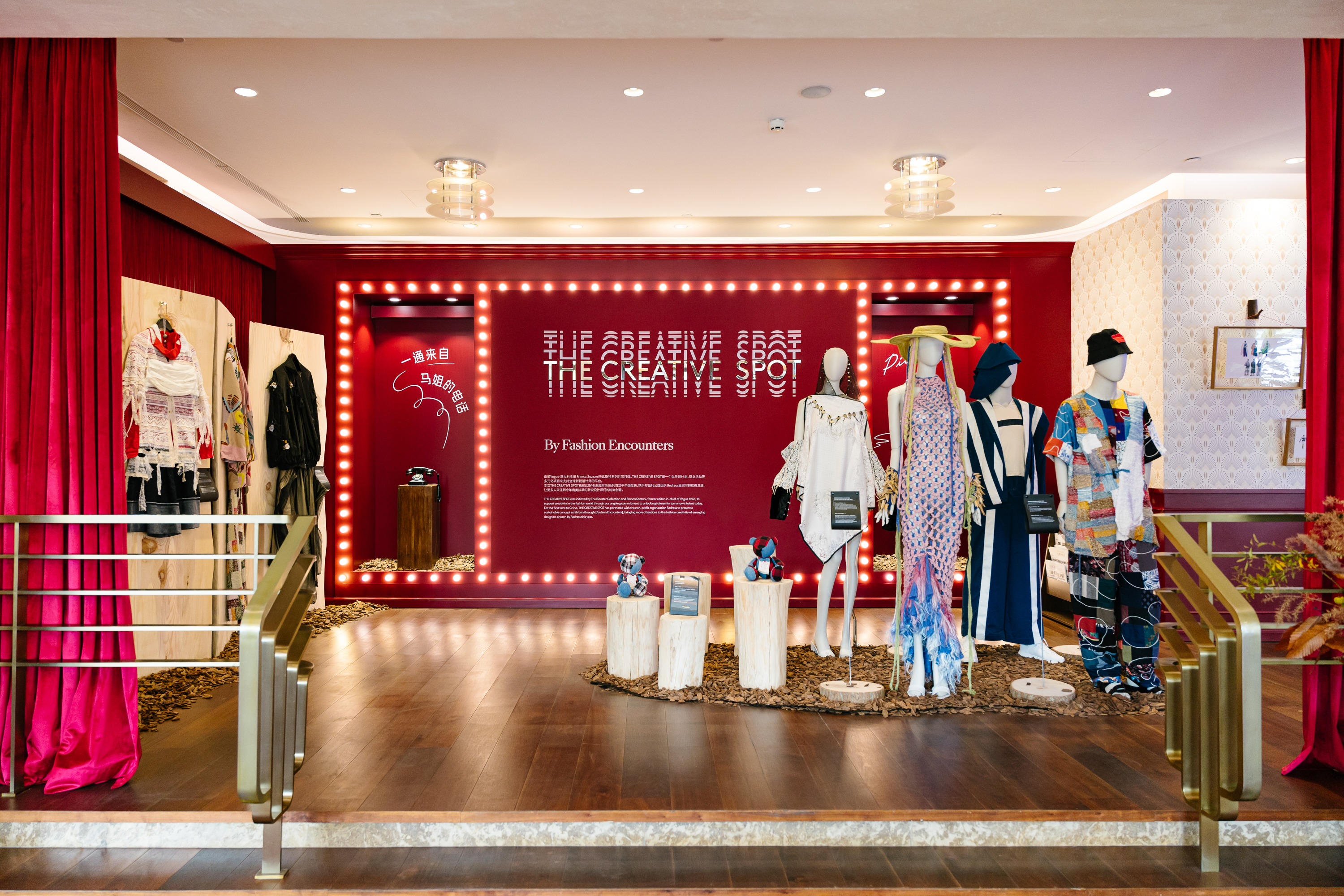High-end travel retail continues to rise in prominence within the global fashion and luxury industry. In the face of numerous challenges, the strategic significance of diversifying channels has become increasingly evident, especially in the ever-promising Chinese Mainland market.
Over the past decade, Chinese consumers have evolved from being new to experiential retail to seeking out iconic destinations, and now to pursuing genuine emotional relaxation. The future and growth potential of the “tourism + shopping” model lies in mastering consumer trends.
The China Tourism Academy recently released the first report on the shopping tourism industry in the Chinese Mainland—titled the China Shopping Tourism Development Report (hereafter referred to as “the report”). The report highlights that shopping is one of the six essential elements of tourism. However, current destination development focuses more on elements like dining, accommodations, and entertainment while neglecting “shopping,” presenting both challenges and opportunities.
Since opening its first shopping village in Oxfordshire, UK, in 1995, The Bicester Collection has maintained double-digit annual sales growth for 28 consecutive years across its 12 shopping villages worldwide.
This article by Luxe.co will review The Bicester Collection’s decade of successful operations in the Chinese Mainland market, exploring how high-end shopping villages attract both local and global visitors while fulfilling their role as “retailers serving retailers,” driving the continuous advancement of the Chinese shopping tourism industry.

Stunning Growth Data: The Bicester Collection Enters a “Golden Era” in the Chinese Mainland
The Bicester Collection, renowned for creating global travel shopping destinations, achieved double-digit sales growth at its Chinese members—Bicester Shanghai Village and Bicester Suzhou Village—during this year’s National Day Golden Week.
At Bicester Suzhou Village, single-day retail sales records were broken for three consecutive days, from October 2 to October 4. Across the two shopping villages, over 30 retail and dining outlets set new single-day sales records. More than half of the retail and dining brands ranked first or second in sales among non-full-price channels nationwide.
A particularly notable highlight is the potential of non-local visitors. During Golden Week, over 50% of visitors to Bicester Suzhou Village were from outside the local area. At Bicester Shanghai Village, visitor traffic rose by 21% year-on-year. Currently, approximately 20% of the visitor base at both villages consists of non-local guests, with a long-term goal of achieving a 50-50 split between local and non-local customers. With the reopening of China’s borders and the introduction of the 144-hour visa-free policy, tax-refund transactions at Bicester Shanghai Village nearly tripled during the holiday, indicating that international visitors are expected to play a crucial role in future growth.
In the context of a generally sluggish luxury market, the data provided by The Bicester Collection to Luxe.co is particularly encouraging. The shopping village retail model, which originated in Europe and the United States, has taken root in the Chinese Mainland and has even begun to attract global tourists. After a decade of deep cultivation, Bicester Shanghai Village and Bicester Suzhou Village are entering their “golden era.”
Through the impressive performance of The Bicester Collection in the Chinese Mainland, it is evident that the “tourism + shopping” industry and visitor demands are undergoing a qualitative transformation.

From “Travel Shopping” to “Shopping Tourism” as an Emerging Trend
The report released by the China Tourism Academy highlights that over 90% of respondents engage in shopping during their travels, and nearly 70% plan their shopping activities either partially or fully before their trips. The shift from “travel shopping” to “shopping tourism” has become an industry trend.
Particularly noteworthy are the suggestions from tourists, which emphasize three key priorities: enhancing the cultural uniqueness and differentiation of product designs, increasing experiential activities and leisure spaces at shopping destinations, and improving overall visitor experience. These demands account for 26.3%, 25.5%, and 25.15% of feedback, respectively.
The China Shopping Tourism Development Report also points out that experiential consumption trends are becoming more pronounced. Consumers increasingly value the unique experiences that offline shopping provides, particularly its social aspects. In physical retail environments, customers can personally experience the texture, scent, and appearance of products, while enjoying the shared joy of shopping with family and friends.
Driven by this shift in demand, integrated shopping destinations that combine retail, dining, entertainment, and social interaction have begun to emerge, gradually evolving into standalone shopping tourism destinations.
These destinations are transforming—spatially, from enclosed spaces to open environments; and functionally, from purely shopping-focused areas to richly cultural and experiential hubs. They not only fulfill the role of retail venues but also serve as popular tourist attractions and shopping tourism destinations.
Represented by Bicester Shanghai Village and Bicester Suzhou Village, these destinations leverage prime locations, create exceptional retail environments, and offer personalized services and unique experiential projects to create immersive vacation atmospheres for visitors. In these settings, visitors adopt a relaxed, open mindset and are more inclined to explore new sights, foods, activities, and even unfamiliar brands and products.

Above: Adjacent to the Yangcheng Lake Resort, Bicester Suzhou Village opened in 2014 as The Bicester Collection’s first member in the Chinese Mainland. Its design draws inspiration from the legendary travels of Marco Polo, blending European fashion, art, and cultural sophistication into its architecture.

Above: Opened in 2016, Bicester Shanghai Village is located near the Shanghai Disney Resort. Its design takes cues from the Art Deco architectural style of the 1930s, earning it the nickname “Miniature Bund.” In 2019, it was officially rated as a “National 4A Tourist Attraction.”
Luxury Brands and Shopping Villages: Transforming into a “Win-Win Partnership”
A recent report by McKinsey & Company, Mastering Off-Price Fashion in an Omnichannel World, estimates that from 2025 to 2030, the growth rate of off-price channels will be five times that of full-price channels, providing significant profit potential and investment opportunities for managers and brands.
However, supplementing full-price channels is not the sole reason why luxury brands are investing in off-price channels, such as shopping villages. Diversified and synergistic channel setups offer brands new touchpoints to reach potential customers.
Historically, off-price channels were seen as a way for brands to manage inventory. Now, luxury brands consider these channels more strategically, aiming to preserve or even enhance brand equity while prioritizing the type of customers they can engage through such channels.
According to research from Kantar, three-quarters of respondents said their first encounter with a luxury brand was at a shopping village under The Bicester Collection. Among these, nearly a quarter later became customers of the brand’s full-price stores.

Maintaining strong interactions with high-net-worth individuals (HNWIs) is another key advantage luxury brands see in high-end shopping villages. For instance, exclusive services such as The Apartment VIP lounge and private shopping consultations offered by The Bicester Collection continue to attract HNWIs, many of whom are first-time visitors to the shopping villages.
First-time visitors often report that entering branded boutiques at Bicester Suzhou and Shanghai Villages feels different from visiting a typical outlet store. This perception reflects a significant shift in the partnership dynamics between brands and shopping villages. The Bicester Collection describes this as “no longer a traditional tenant-landlord relationship but a win-win partnership.”
This long-term relationship is supported by The Bicester Collection’s unique approach as “a retailer for retailers,” operating the boutiques in the shopping villages to the standard of brand flagship stores. This includes offering support in areas such as window display design, product presentation, pricing strategies, staff training, and event execution.

Currently, luxury brands like Loewe, alongside activewear and outdoor brands such as Lululemon, On, and Salomon, are a focus of The Bicester Collection’s brand portfolio expansion at Suzhou and Shanghai Villages. Both villages now feature over 200 brands.
Additionally, emerging Chinese designer brands are a distinctive feature of The Bicester Collection in the Chinese Mainland, offering global consumers exclusive items limited to Shanghai and Suzhou.
Beyond the Creator X Yi multi-brand store that supports original Chinese designer labels, The Bicester Collection plans to introduce The Creative Spot, a platform for emerging designers, to the Chinese Mainland in 2024. This platform debuted during Shanghai Fashion Week with a sustainable design-themed pop-up exhibition.

Regarding future brand introductions in the Chinese Mainland, Mark Israel, Co-Chair of Value Retail China, shared with Luxe.co: “Currently, we are at capacity. However, each year we adjust approximately 20% of the brand mix in our villages to better align with changing consumer demands.”
Four Key Focus Areas for Building Shopping Tourism Destinations in the Chinese Mainland
Over the past decade, the positioning of “one-stop luxury shopping destinations” has become a key competitive advantage for The Bicester Collection in the Chinese Mainland market. Based on The Bicester Collection’s operational experience, the China Tourism Academy outlined four main focus areas for developing shopping tourism destinations in the future in its recent report:
1. Strengthening Cultural Experiences
Just as luxury brands emphasize localized narratives to convey their DNA in the Chinese Mainland, shopping villages need to integrate cultural experiences with local history and culture, prioritizing long-term engagement and localization.
To strengthen the connection between the international background of shopping villages and local visitors, Bicester Shanghai and Suzhou Villages organize a variety of cultural and artistic activities throughout the year. These include the “Meet a Crab Buddy” autumn hairy crab food festival in October and the traditional Lunar New Year Dragon Dance Parade, which serve as valuable reference points for integrating cultural tourism into local destinations.
2. Prioritizing Consumer Needs
With the rise of online retail, offline retail must focus on personalized needs, such as catering to families with children or inbound tourists.
In the Chinese Mainland, The Bicester Collection upholds the philosophy of “guest experiences beyond expectations,” refining every service detail, including:
- Concierge-certified “Golden Key” staff providing hands-free shopping, valet parking, pet strollers, and children’s play areas.
- VIP guests enjoy afternoon tea at The Apartment VIP Lounge, along with exclusive fashion updates, front-row seats at fashion shows, access to top art exhibitions, and other personalized services.
- Tax refunds, convenient payment methods, and express delivery services for international visitors ensure seamless shopping experiences.

3. Strengthening Collaboration Across the Tourism Supply Chain
Collaboration with upstream and downstream businesses in the tourism sector can create immersive shopping tourism itineraries, addressing the current weak integration of shopping in the tourism value chain.
For example, in March 2024, the Bicester Shanghai Shopping Express will be launched. The shuttle service will operate three round trips daily, departing from major commercial hubs like Xujiahui and Lujiazui and reaching the shopping village in just one hour. The route will pass by cultural landmarks such as the IFC Mall and the Pudong Art Museum, fostering greater collaboration across the tourism and retail sectors.
4. Driving Continuous Digital Transformation
Smart shopping systems, contactless payments, and digital concierge services enhance convenience and safety for visitors. At the same time, social media’s widespread use amplifies the “check-in” effect among younger generations, providing real-time feedback to shopping tourism destinations and helping improve their services and offerings.
Luxeplace.com observed that since 2023, the shopping tourism sector, represented by shopping villages, has defied the general downturn in retail, showing robust growth. This highlights the enormous potential of the “tourism + shopping” model championed by The Bicester Collection, which remains highly popular with consumers.

| Image Credit: Bicester Shanghai Village, Bicester Suzhou Village
| Editor: LeZhi



